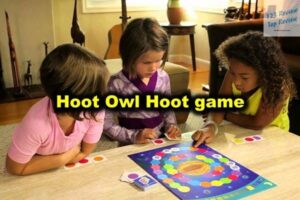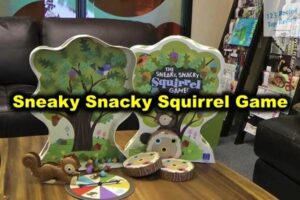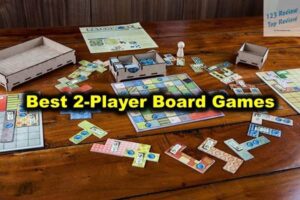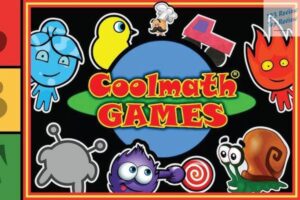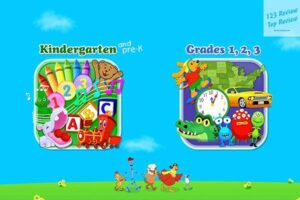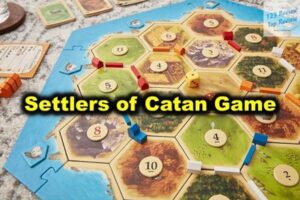This vibrant resource offers a wealth of content that ranges from the natural world and biodiversity to history, culture, geography, and earth sciences. Through its engaging online platform, National Geographic Kids provides a rich tapestry of educational tools, interactive features, and content that appeals to a broad spectrum of interests and learning styles.
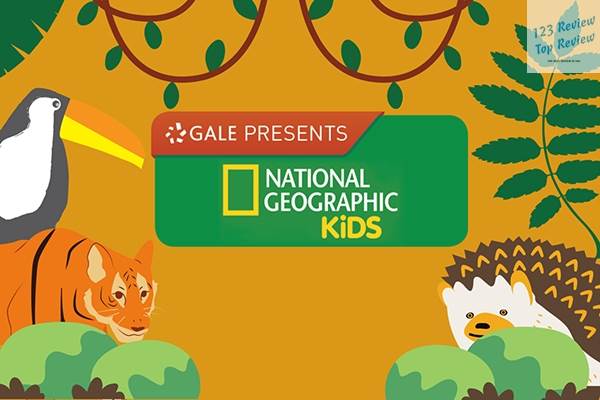
In this article, 123 Review will delve into the various features of National Geographic Kids, explore its educational value, and discuss how it can be effectively integrated into both classroom and home learning environments.
Overview of Resources
Online Platform Features
National Geographic Kids is an online platform that is thoughtfully designed to be both educational and entertaining. The website’s user interface is intuitive, with vibrant colors, engaging visuals, and a layout that is easy for children to navigate. The platform is structured to cater to different age groups, ensuring that content is age-appropriate and accessible.
Key features of the online platform include:
- User-Friendly Navigation: The website’s design makes it simple for children to find content that interests them. Categories are clearly labeled, and the search function is straightforward, allowing users to quickly locate articles, videos, games, or activities.
- High-Quality Visuals: True to National Geographic’s legacy, the platform is rich in stunning photography and high-definition videos. These visuals are not just aesthetically pleasing; they serve as powerful tools for visual learning, helping children to better understand and retain information.
- Interactive Elements: The platform includes a variety of interactive features such as quizzes, games, and hands-on activities that encourage active participation in the learning process. These elements are designed to be both fun and educational, keeping children engaged while they learn.
Types of Content Available
National Geographic Kids offers a diverse array of content that caters to a wide range of topics and learning preferences. The platform is designed to be versatile, making it suitable for various educational settings, whether in the classroom, at home, or on-the-go. Some of the key types of content available include:
- Articles and Facts: The platform hosts a vast collection of articles that cover a broad spectrum of topics, from animal behavior and environmental science to ancient history and cultural traditions. These articles are written in a style that is accessible to children, with a focus on delivering information in a clear, concise, and engaging manner. Additionally, the “Weird But True!” section offers quirky and surprising facts that are both educational and entertaining.
- Videos: National Geographic Kids features a wide range of educational videos that bring subjects to life through compelling storytelling and stunning visuals. These videos cover topics such as wildlife, ecosystems, space exploration, and more. Many of the videos are narrated in a way that is both informative and engaging, making complex concepts more accessible to young learners.
- Games and Quizzes: The platform offers a variety of interactive games and quizzes designed to reinforce learning in a fun and engaging way. These activities range from trivia quizzes that test knowledge on specific subjects to strategy games that challenge critical thinking and problem-solving skills. The games are designed to be entertaining, but they are also structured to reinforce educational content, making them a valuable tool for learning.
- Hands-on Activities: In addition to digital content, National Geographic Kids provides ideas for hands-on activities and projects. These activities encourage creativity and experimentation, allowing children to apply what they’ve learned in a practical, tangible way. Examples include science experiments, arts and crafts projects, and outdoor activities that explore nature.
Educational Applications
National Geographic Kids is a versatile resource that can be used in a variety of educational contexts. Whether it’s being used to introduce new concepts, reinforce existing knowledge, or provide a fun and engaging activity, the platform offers tools that can enhance the learning experience in meaningful ways. Teachers and parents alike can find valuable resources on National Geographic Kids that align with educational standards and support a wide range of learning objectives.
- Classroom Integration: Teachers can easily incorporate National Geographic Kids into their lesson plans, using articles, videos, and interactive content to supplement traditional teaching methods. The platform’s interdisciplinary approach makes it particularly useful for cross-curricular activities, where subjects like science, geography, and history can be taught together in a cohesive manner.
- Homework and Research: Students can use National Geographic Kids as a resource for homework assignments and research projects. The platform’s articles are written in a way that is accessible to children, making it a valuable tool for independent study. Additionally, the quizzes and games can be used to reinforce what students have learned, providing a fun way to review material.
- Extracurricular Learning: Beyond the classroom, National Geographic Kids is an excellent resource for extracurricular learning. Whether it’s a rainy day at home or a long car ride, the platform offers a wealth of content that can keep children entertained and educated. Parents can use the platform to explore new topics with their children, encouraging a love of learning that extends beyond the school day.
Educational Value
Learning through Multimedia
One of the most significant advantages of National Geographic Kids is its use of multimedia to create an immersive learning experience. The platform leverages high-quality videos, interactive games, and stunning photography to make learning both engaging and effective. This multimedia approach is particularly beneficial for young learners, who often respond well to visual and interactive content.
- Visual Learning: The platform’s use of high-definition photography and videos helps to bring complex concepts to life. For example, a video about the migration patterns of animals can provide a visual representation of the information that is more impactful than reading about it in a textbook. This approach helps to enhance understanding and retention, as children are more likely to remember what they have seen and experienced.
- Interactive Learning: The interactive elements on National Geographic Kids, such as quizzes and games, encourage active participation in the learning process. Rather than passively consuming information, children are prompted to engage with the content, apply what they have learned, and test their understanding. This active engagement is key to deep learning, as it encourages children to think critically and problem-solve.
Enhancing Critical Thinking Skills
National Geographic Kids is designed to challenge young minds and foster the development of critical thinking skills. The platform’s content is structured to encourage children to ask questions, explore new ideas, and think deeply about the subjects they are studying.
- Problem-Solving Games: The platform’s games are not just for fun; they are also designed to promote critical thinking and problem-solving skills. For example, strategy-based games may require children to think ahead, plan their actions, and consider the consequences of their decisions. These activities help to develop important cognitive skills that are essential for success in both academic and real-world settings.
- Quizzes and Assessments: The quizzes on National Geographic Kids are designed to test knowledge and understanding in a way that is both fun and challenging. These assessments provide immediate feedback, allowing children to learn from their mistakes and reinforce their knowledge. By encouraging children to reflect on what they have learned and how they can improve, these quizzes help to build a strong foundation for critical thinking.
Facilitating Interdisciplinary Learning
National Geographic Kids excels in promoting interdisciplinary learning, where multiple subjects are integrated to provide a more holistic understanding of a topic. This approach is particularly effective for helping children to see the connections between different areas of knowledge and to understand how they interact.
- Cross-Curricular Connections: The platform’s content often weaves together elements from different disciplines, such as science, geography, history, and culture. For example, an article on the Amazon rainforest might explore the biodiversity of the region, the impact of deforestation, and the cultural significance of the rainforest to indigenous peoples. This interdisciplinary approach helps children to see the bigger picture and understand the interconnectedness of different areas of knowledge.
- Holistic Understanding: By integrating multiple subjects, National Geographic Kids helps children to develop a more comprehensive understanding of the world around them. This approach encourages children to think critically about how different factors influence each other and to consider the broader implications of what they are learning. For example, learning about climate change might involve exploring the science behind it, the impact on different ecosystems, and the social and political challenges of addressing the issue.
Interactive Learning
Engaging Videos and Games
National Geographic Kids offers a wide array of videos and games that make learning an interactive and enjoyable experience. These resources are designed to capture children’s attention and keep them engaged, making learning both fun and effective.
- Educational Videos: The platform’s videos cover a broad range of topics, from wildlife documentaries to space exploration. These videos are not only informative but also entertaining, with engaging narration and stunning visuals that bring subjects to life. Many of the videos are designed to be interactive, with prompts that encourage children to think critically about what they are watching and to ask questions.
- Interactive Games: The games on National Geographic Kids are designed to be both fun and educational. These games challenge children to apply what they have learned, solve problems, and think critically. For example, a game about animal habitats might require children to match animals with their correct environments, reinforcing their knowledge of different ecosystems. By making learning interactive, these games help to keep children engaged and motivated.
Hands-on Activities and Projects
In addition to digital content, National Geographic Kids also provides ideas for hands-on activities and projects that encourage creativity and experimentation. These activities allow children to apply what they have learned in a practical, tangible way, helping to reinforce their understanding and make learning more meaningful.
- Science Experiments: The platform offers a variety of science experiments that children can do at home or in the classroom. These experiments are designed to be simple and safe, while also being educational and fun. For example, a project on the water cycle might involve creating a mini-ecosystem in a jar, allowing children to observe the process of evaporation and condensation in real-time.
- Arts and Crafts Projects: National Geographic Kids also provides ideas for arts and crafts projects that encourage creativity and self-expression. These projects often tie into the educational content on the platform, allowing children to explore topics like culture, history, and nature through art. For example, a project on ancient Egypt might involve creating a replica of a pharaoh’s headdress, helping children to learn about the culture and history of the region in a hands-on way.
- Outdoor Activities: The platform encourages children to explore the natural world around them through outdoor activities. These activities might include nature walks, birdwatching, or gardening projects, all designed to foster a connection with nature and a deeper understanding of the environment. By getting outside and experiencing the world firsthand, children can gain a greater appreciation for the subjects they are studying.
Quizzes and Assessments
Quizzes and assessments are an integral part of the learning experience on National Geographic Kids. These tools are designed to test knowledge, reinforce learning, and provide immediate feedback, helping children to understand what they have learned and where they need to improve.
- Interactive Quizzes: The platform’s quizzes are designed to be engaging and fun, with a focus on testing knowledge in a way that is both challenging and rewarding. These quizzes often include a mix of multiple-choice questions, matching exercises, and short-answer questions, allowing children to demonstrate their understanding in different ways. The quizzes are also designed to be adaptive, with questions that adjust in difficulty based on the child’s performance.
- Immediate Feedback: One of the key benefits of the quizzes on National Geographic Kids is the immediate feedback they provide. After completing a quiz, children receive instant results that show them how they performed and where they need to improve. This feedback helps to reinforce learning and encourages children to reflect on their mistakes and try again.
- Tracking Progress: The platform also allows children to track their progress over time, providing a clear picture of their learning journey. By seeing how they have improved and where they still need to work, children can stay motivated and engaged in the learning process.
Topics Explored
Natural World and Biodiversity
National Geographic Kids places a strong emphasis on the natural world and biodiversity, providing a wealth of content that explores the wonders of the environment and the importance of conservation.
- Wildlife Exploration: The platform offers extensive coverage of different species and their habitats, from the smallest insects to the largest mammals. Children can learn about the behavior, diet, and life cycles of various animals, as well as the threats they face from human activity and climate change. The platform’s videos, articles, and games all work together to provide a comprehensive understanding of the animal kingdom and the importance of protecting it.
- Ecosystems and Habitats: National Geographic Kids also explores the different ecosystems and habitats around the world, from rainforests and deserts to oceans and polar regions. The platform provides detailed information about the unique characteristics of each ecosystem, the species that inhabit them, and the challenges they face. By understanding how ecosystems function and the role they play in the larger environment, children can gain a greater appreciation for the natural world and the need to preserve it.
- Conservation and Sustainability: Conservation is a key theme on National Geographic Kids, with content that highlights the importance of protecting endangered species, preserving habitats, and promoting sustainable practices. The platform encourages children to think about their impact on the environment and to take action to protect the planet. Whether it’s through simple actions like recycling or more involved projects like participating in a local conservation effort, National Geographic Kids empowers children to make a difference.
History and Culture
In addition to its focus on the natural world, National Geographic Kids also offers a wealth of content related to history and culture. This content is designed to help children understand the past, appreciate the diversity of human cultures, and explore the connections between different peoples and societies.
- Ancient Civilizations: The platform offers in-depth coverage of ancient civilizations, from the pyramids of Egypt to the temples of the Maya. Children can learn about the history, culture, and achievements of these civilizations, as well as the challenges they faced. The platform’s articles, videos, and activities all work together to provide a comprehensive understanding of ancient history and its impact on the modern world.
- World History: National Geographic Kids also explores key events and figures in world history, from the rise and fall of empires to the achievements of great leaders and thinkers. The platform’s content is designed to be engaging and accessible, with a focus on making history come alive for young learners. By understanding the events that have shaped our world, children can gain a greater appreciation for the complexity of history and the importance of learning from the past.
- Cultural Diversity: The platform also highlights the rich diversity of human cultures around the world. Children can learn about the traditions, customs, and beliefs of different peoples, as well as the challenges they face in a rapidly changing world. By exploring the diversity of human cultures, children can gain a greater appreciation for the similarities and differences that define us and the importance of respecting and celebrating diversity.
Geography and Earth Sciences
Geography and earth sciences are central to the content offered by National Geographic Kids. The platform provides a wealth of information about the physical features of our planet, the processes that shape it, and the impact of human activity on the environment.
- Physical Geography: The platform offers detailed information about the physical features of the Earth, from mountains and rivers to deserts and oceans. Children can learn about the processes that shape these features, such as erosion, volcanic activity, and plate tectonics. The platform’s videos and articles provide a comprehensive understanding of the physical geography of our planet and the forces that shape it.
- Climate and Weather: National Geographic Kids also explores topics related to climate and weather, from the basics of meteorology to the impact of climate change. Children can learn about the different factors that influence weather patterns, the science behind extreme weather events, and the challenges of predicting and responding to natural disasters. By understanding the complexities of climate and weather, children can gain a greater appreciation for the impact of these factors on our world.
- Space Exploration: The platform also offers content related to space exploration, from the history of space travel to the latest discoveries in astronomy. Children can learn about the planets, stars, and galaxies that make up our universe, as well as the challenges of exploring space. The platform’s content is designed to be both informative and inspiring, encouraging children to dream big and think about the possibilities of space exploration.
Use in the Classroom
Teacher Resources and Tools
National Geographic Kids provides a wealth of resources specifically designed for teachers. These resources are aligned with educational standards and offer a range of tools that can be easily integrated into the classroom.
- Lesson Plans: The platform offers a variety of lesson plans that are designed to align with educational standards and support a wide range of learning objectives. These lesson plans are structured to be flexible and adaptable, allowing teachers to tailor them to the needs of their students. Each lesson plan includes clear objectives, detailed instructions, and suggested activities, making it easy for teachers to incorporate National Geographic Kids into their curriculum.
- Classroom Activities: In addition to lesson plans, National Geographic Kids provides a range of classroom activities that are designed to be both fun and educational. These activities include hands-on projects, group activities, and discussion prompts, all designed to reinforce the content covered in the platform’s articles, videos, and games. By engaging students in active learning, these activities help to reinforce key concepts and promote critical thinking.
- Instructional Videos: The platform also offers a variety of instructional videos that can be used to introduce new topics, reinforce existing knowledge, or provide a multimedia experience that complements traditional teaching methods. These videos are designed to be both informative and engaging, with a focus on making complex concepts accessible to young learners.
Curriculum Integration Strategies
Integrating National Geographic Kids into the classroom curriculum is straightforward, thanks to the platform’s alignment with educational standards and its interdisciplinary approach. Teachers can use the platform to supplement textbook learning, introduce new topics, or provide a multimedia experience that reinforces key concepts.
- Subject-Specific Integration: National Geographic Kids can be easily integrated into specific subjects, such as science, geography, history, and social studies. For example, a science lesson on ecosystems might include a video from the platform that explores different habitats and the species that live in them. Similarly, a history lesson on ancient civilizations might include an article from the platform that explores the culture and achievements of the Maya. By integrating National Geographic Kids into specific subjects, teachers can enhance their lessons with high-quality, engaging content.
- Cross-Curricular Teaching: The interdisciplinary nature of National Geographic Kids also makes it an excellent resource for cross-curricular teaching. Teachers can use the platform to create lessons that integrate multiple subjects, such as science and social studies or geography and history. For example, a lesson on the impact of climate change might include content from the platform that explores the science behind climate change, its impact on different ecosystems, and the social and political challenges of addressing the issue. By integrating multiple subjects, teachers can help students to see the connections between different areas of knowledge and to understand how they interact.
- Project-Based Learning: National Geographic Kids is also an excellent resource for project-based learning, where students work on a specific project over an extended period. The platform’s wealth of content provides a rich source of information and inspiration for student projects. For example, a project on conservation might include research on endangered species, the creation of a conservation plan, and a presentation to the class. By using National Geographic Kids as a resource for project-based learning, teachers can help students to develop important skills such as research, critical thinking, and collaboration.
Case Studies and Success Stories
Numerous case studies highlight the successful use of National Geographic Kids in educational settings. Schools that have integrated the platform into their curriculum report improved student engagement, better understanding of complex subjects, and enhanced critical thinking skills.
- Student Engagement: Teachers report that the interactive nature of National Geographic Kids helps to keep students engaged and motivated. The platform’s use of multimedia, such as videos and games, captures students’ attention and makes learning more enjoyable. As a result, students are more likely to stay focused, participate in class discussions, and complete assignments.
- Improved Understanding: The use of National Geographic Kids in the classroom has also been shown to improve students’ understanding of complex subjects. The platform’s content is designed to make difficult concepts more accessible, using clear explanations, engaging visuals, and interactive elements. Teachers report that students who use the platform are better able to grasp challenging material, retain information, and apply what they have learned.
- Critical Thinking Skills: National Geographic Kids also promotes the development of critical thinking skills, as students are encouraged to ask questions, solve problems, and think deeply about the subjects they are studying. Teachers report that students who use the platform are more likely to think critically, analyze information, and draw connections between different areas of knowledge.
Parent and Student Engagement
Learning at Home
National Geographic Kids is not just a classroom tool; it is also an excellent resource for learning at home. The platform offers a wealth of content that parents can use to supplement their child’s education, encourage curiosity, and foster a love of learning.
- Educational Activities: The platform provides a variety of activities that parents can do with their children at home. These activities include science experiments, arts and crafts projects, and outdoor activities that encourage exploration and discovery. By engaging in these activities together, parents can help their children to apply what they have learned and to develop important skills such as creativity, problem-solving, and critical thinking.
- Family Learning: National Geographic Kids also offers content that is designed to be enjoyed by the whole family. Parents and children can watch educational videos together, play interactive games, and explore different topics of interest. By learning together, families can foster a shared love of knowledge and create lasting memories.
- Homework Help: The platform is also a valuable resource for homework help. Parents can use the articles, videos, and other content on National Geographic Kids to help their children with research projects, assignments, and studying for tests. The platform’s content is designed to be accessible to children, making it easy for parents to explain complex concepts and to provide support for their child’s learning.
Community Involvement Activities
National Geographic Kids encourages children to get involved in their communities and to make a positive impact on the world around them. The platform offers ideas for community involvement activities that children can participate in, both individually and with their families.
- Environmental Projects: The platform provides ideas for environmental projects that children can do in their communities, such as organizing a neighborhood cleanup, planting trees, or starting a recycling program. These projects help children to understand the importance of environmental stewardship and to take action to protect the planet.
- Cultural Awareness Activities: National Geographic Kids also promotes cultural awareness and understanding through activities that celebrate diversity and encourage children to learn about different cultures. For example, children might organize a cultural fair at their school, create a presentation about a country they are interested in, or participate in a cultural exchange program. By engaging in these activities, children can develop a greater appreciation for the diversity of human cultures and the importance of respecting and celebrating differences.
- Community Service: The platform also encourages children to get involved in community service projects, such as volunteering at a local animal shelter, participating in a food drive, or helping out at a community garden. These activities help children to develop a sense of responsibility and empathy, and to understand the importance of giving back to their communities.
Feedback and Testimonials
National Geographic Kids has received positive feedback from both parents and educators, who praise the platform for its educational value, engaging content, and user-friendly design.
- Parent Testimonials: Parents report that National Geographic Kids has helped to spark their children’s curiosity and to foster a love of learning. Many parents appreciate the platform’s focus on high-quality, educational content that is both fun and informative. They also praise the platform for its ease of use, noting that it is easy for children to navigate and find content that interests them.
- Educator Feedback: Teachers also give high marks to National Geographic Kids, noting that the platform is a valuable resource for enhancing classroom learning. Many educators appreciate the platform’s alignment with educational standards and its interdisciplinary approach, which makes it easy to integrate into the curriculum. Teachers also report that students are more engaged and motivated when using National Geographic Kids, and that the platform helps to improve understanding of complex subjects.
Future Developments
Emerging Features and Updates
National Geographic Kids is continually evolving, with new features and updates being added regularly to enhance the user experience and to provide even more educational value.
- New Content Areas: The platform is expanding its content areas to include new topics and subjects. For example, National Geographic Kids is adding more content related to current events, technology, and global issues, helping children to stay informed and to develop a broader understanding of the world around them. By expanding its content areas, the platform is ensuring that it remains relevant and engaging for a wide range of interests and learning styles.
- Interactive Features: National Geographic Kids is also adding new interactive features, such as virtual reality experiences, 3D models, and augmented reality tools. These features are designed to provide an even more immersive and engaging learning experience, allowing children to explore subjects in new and exciting ways. By leveraging the latest technology, National Geographic Kids is staying at the forefront of educational innovation.
- User Experience Improvements: The platform is also focused on improving the user experience, with updates that make it even easier for children to navigate and find content. For example, the search function is being enhanced to provide more accurate and relevant results, and the layout is being updated to be even more intuitive and user-friendly. By continually improving the user experience, National Geographic Kids is ensuring that it remains a valuable resource for children, parents, and educators alike.
Expansion of Content Areas
As National Geographic Kids continues to grow, the platform is expanding its content areas to cover an even wider range of topics and subjects. This expansion is designed to keep the platform relevant and engaging for a broad audience, while also providing more opportunities for learning and exploration.
- STEM Education: National Geographic Kids is increasing its focus on STEM (Science, Technology, Engineering, and Mathematics) education, with new content that covers topics such as robotics, coding, and engineering. This content is designed to be both informative and inspiring, encouraging children to explore the possibilities of STEM and to develop the skills they need for the future.
- Global Issues: The platform is also adding more content related to global issues, such as climate change, social justice, and sustainability. This content is designed to help children understand the challenges facing our world and to think critically about how they can make a difference. By addressing these important issues, National Geographic Kids is helping to prepare the next generation of leaders and change-makers.
- Cultural Studies: National Geographic Kids is also expanding its coverage of cultural studies, with new content that explores the traditions, customs, and beliefs of different peoples around the world. This content is designed to promote cultural awareness and understanding, helping children to appreciate the diversity of human cultures and to celebrate the richness of our global community.
Trends in Educational Technology
National Geographic Kids is at the forefront of educational technology, with a focus on leveraging the latest trends to create a more engaging and effective learning experience.
- Virtual Reality: One of the most exciting trends in educational technology is the use of virtual reality (VR) to create immersive learning experiences. National Geographic Kids is exploring the use of VR to allow children to explore distant lands, dive into the depths of the ocean, or travel back in time to ancient civilizations. By using VR, the platform is creating new opportunities for experiential learning and making complex concepts more accessible and engaging.
- Artificial Intelligence: The platform is also exploring the use of artificial intelligence (AI) to personalize the learning experience. By analyzing user data, AI can provide tailored content recommendations, adaptive learning paths, and personalized feedback, helping to ensure that each child receives the support and resources they need to succeed. By leveraging AI, National Geographic Kids is creating a more personalized and effective learning experience.
- Gamification: Gamification is another trend that National Geographic Kids is embracing, with a focus on using game elements to make learning more fun and engaging. The platform is adding new games, challenges, and rewards that encourage children to explore new topics, complete tasks, and achieve learning goals. By incorporating gamification, National Geographic Kids is motivating children to stay engaged and to develop a lifelong love of learning.
In conclusion, National Geographic Kids is a powerful educational tool that offers a wealth of resources for children, parents, and educators. With its engaging content, interactive features, and focus on interdisciplinary learning, the platform provides a comprehensive and effective way to explore the world and beyond. As it continues to evolve and expand, National Geographic Kids remains at the forefront of educational innovation, helping to inspire the next generation of explorers, thinkers, and change-makers.
